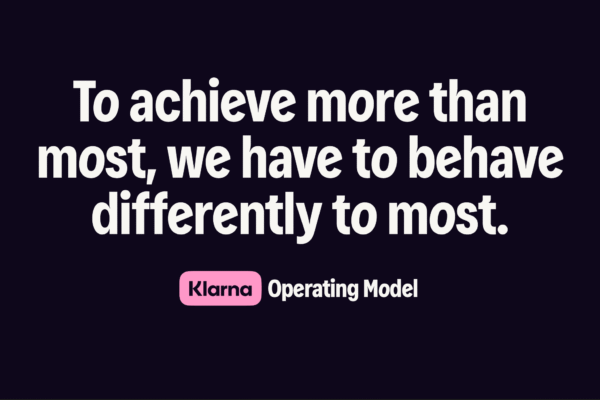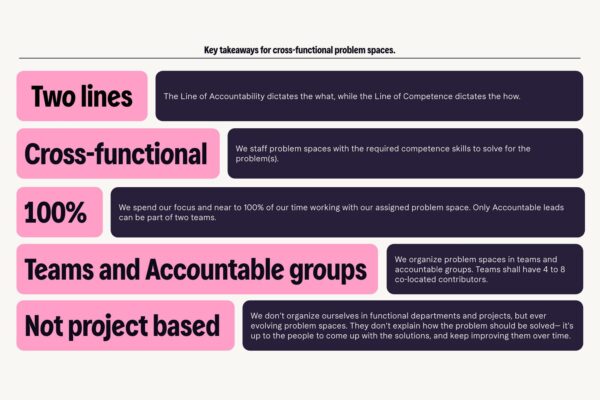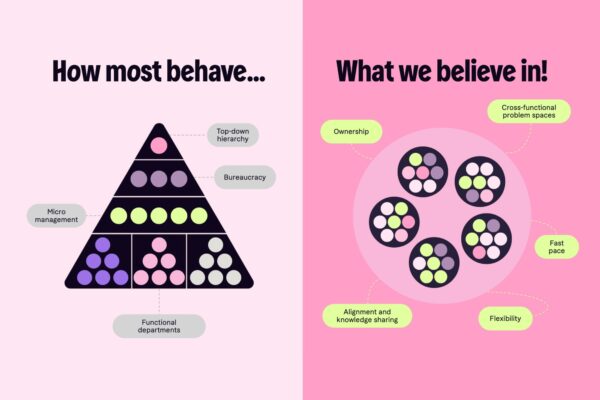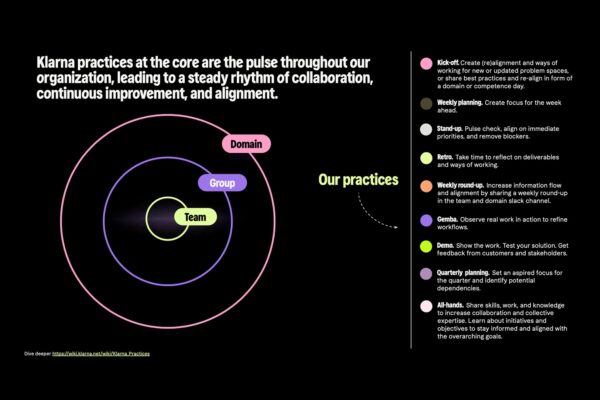Turned Klarna’s operating model from theory into practice by designing structure, rituals, and AI tools that helped 600+ global teams actually adopt the way we work.
Introduction
Making Klarna’s operating model usable, repeatable, and real.
Klarna had a model for how teams should work. But it wasn’t keeping up. Teams were growing fast and figuring things out on their own. Planning cycles varied. Some used OKRs, some used roadmaps, others didn’t. Roles blurred as new layers of hierarchy got added. Work got duplicated, collaboration got harder, and teams were moving—but not in the same direction.
I joined the operating model team to fix that. We weren’t there to enforce rules, we were there to make the model useful. I helped lead a discovery sprint across 30 teams: interviewed leads, shadowed rituals, and mapped where things were breaking down. We focused on what was actually slowing people down, not just what looked broken on the surface.
We built tools, guidance, and rituals that helped 600+ teams move faster, stay aligned, and stop wasting time reinventing the wheel.
We didn’t just tidy up documentation. We launched Operating Model 101—a short, interactive guide to how Klarna works at its best. I redesigned Klarna’s core rituals, turning scattered practices into a shared rhythm that worked across timezones. I also built AI-powered tools that embedded the model into how teams actually worked. I didn’t implement AI because it was shiny. I used it as it solved real problems, reduced repetitive work, and helped teams adopt better ways of working without needing more overhead to get there.
Highlights
AI-powered Tools
We didn’t want to just talk about ways of working. We built them into how work actually happens. I designed a set of AI-powered tools that helped teams focus on what mattered by automating the rest: from planning offsites and nudging rituals to rewarding progress and offering real-time coaching, all grounded in Klarna’s ways of working. The tools cut repetitive tasks, reinforced best practice, and made better ways of working easier to adopt. Integrated across Wiki, Slack, and team pages, they became part of Klarna’s broader AI ecosystem used daily by 90% of Klarnauts.
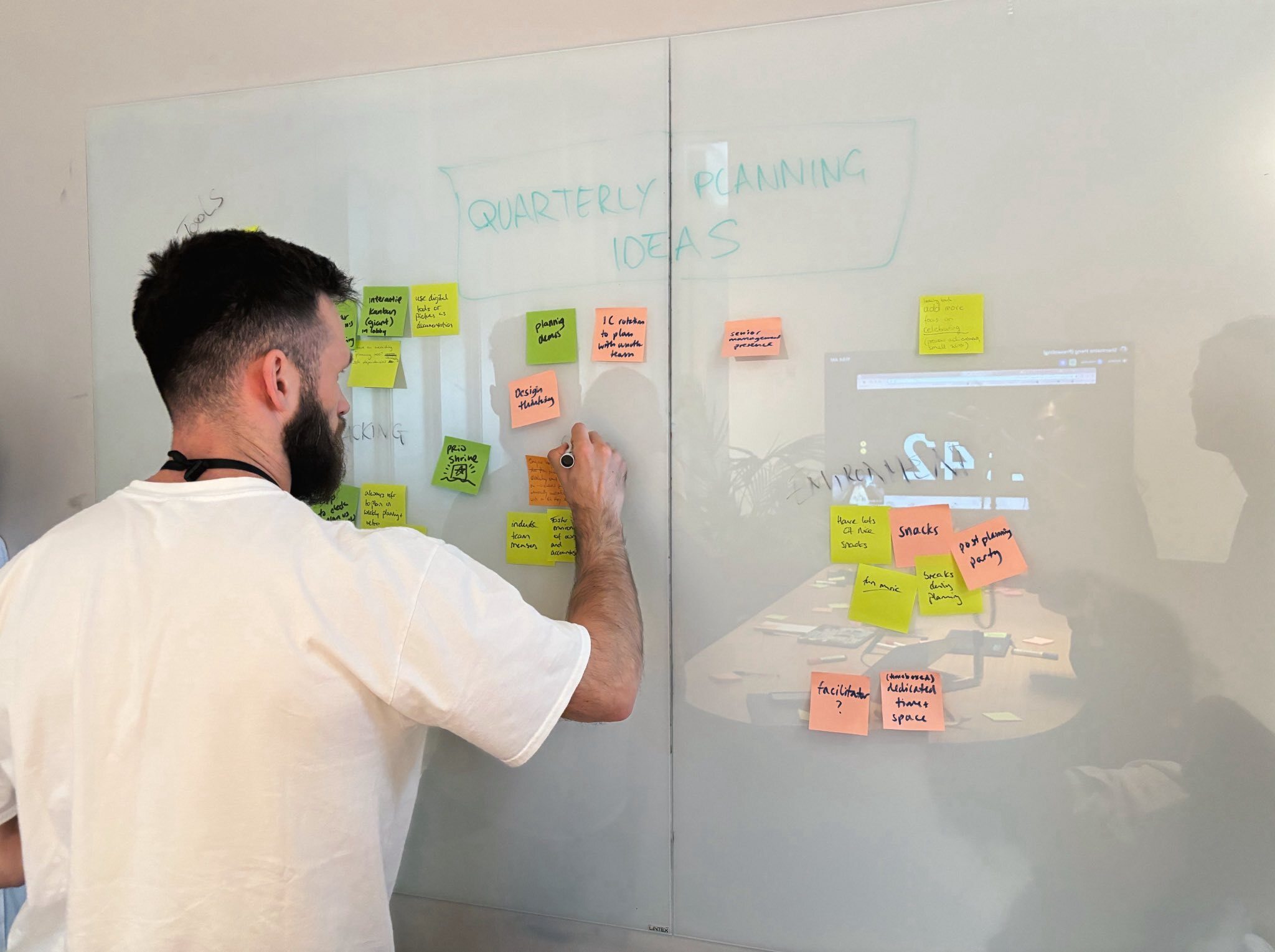
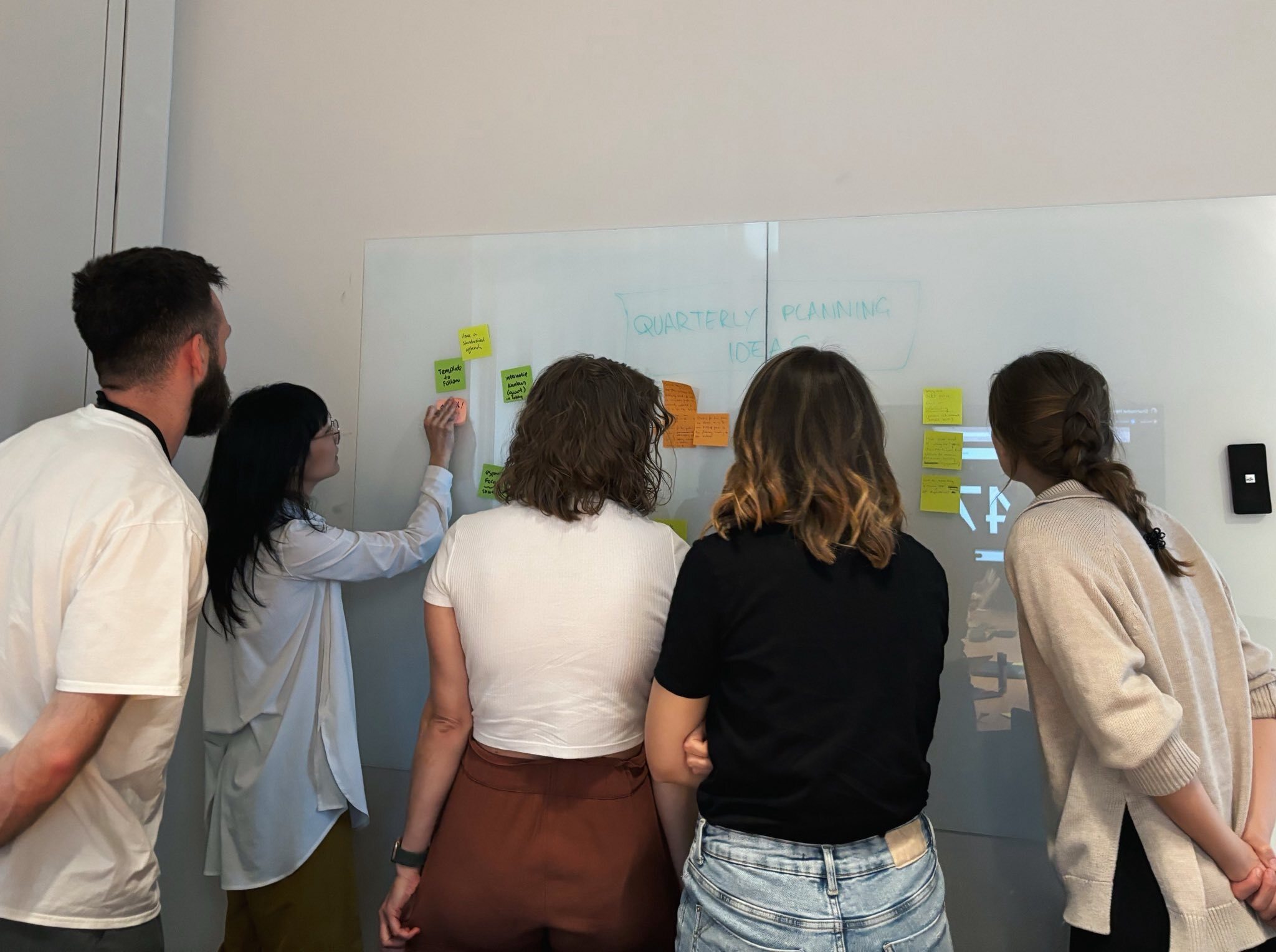
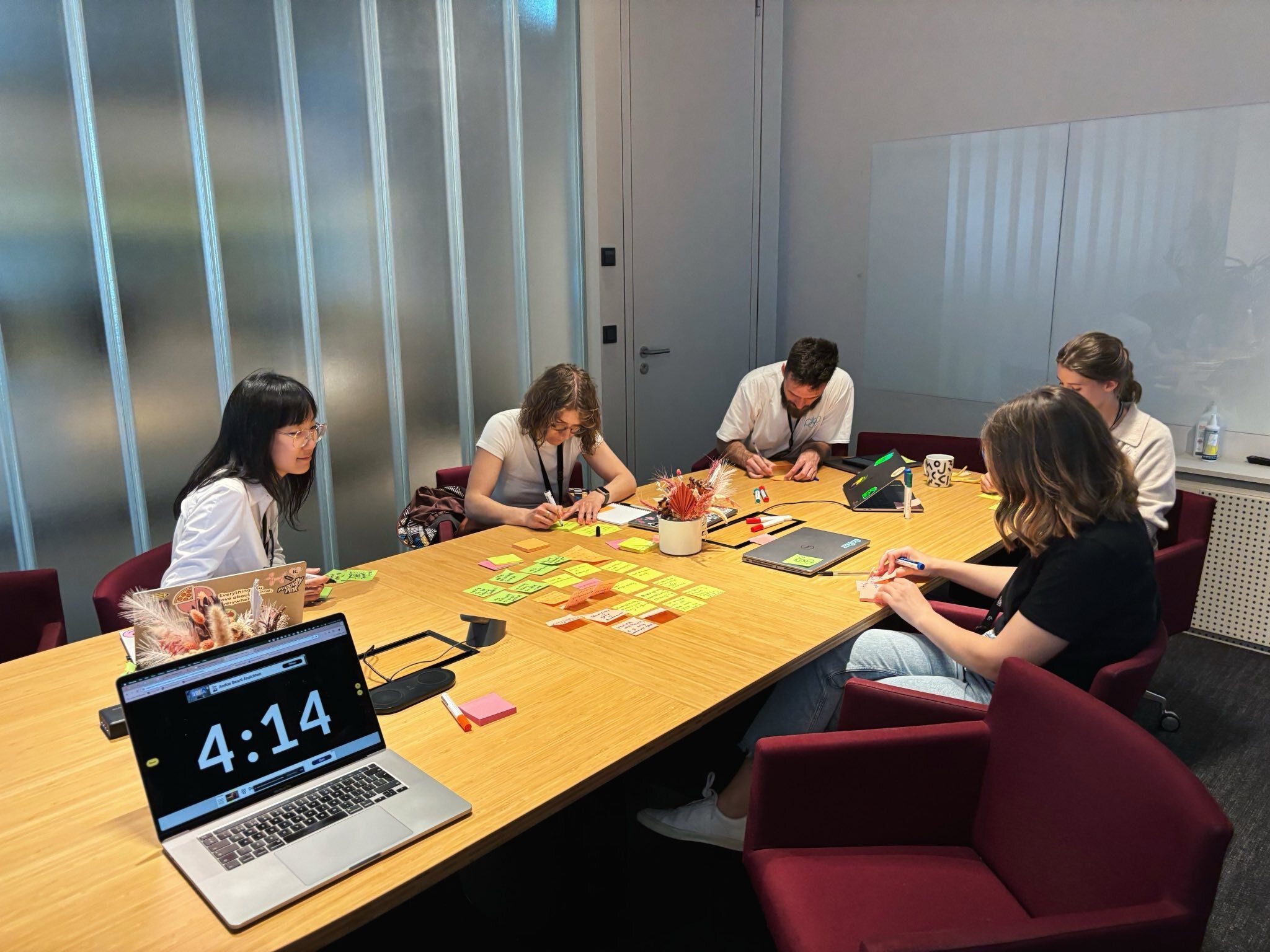
Klarna Rituals
As Klarna scaled, core team rituals—planning, standups, retros, demos, etc—became inconsistent or disappeared entirely. I redesigned those rituals to create a shared rhythm that worked across a global, hybrid organisation. We defined what best practice looked like, then turned that into simple, flexible guidance teams could adapt. These rituals supported alignment, sped up decision-making, and strengthened collaboration across timezones. They became a core part of the operating model, giving teams enough structure to move together, not just in parallel.
Operating Model 101
Klarna’s operating model was being used—but differently across teams, and often without clarity or consistency. It lived in a 140-slide deck that was dense, hard to navigate, and easy to ignore. We created Operating Model 101, a short, interactive guide that brought Klarna’s ways of working to life. It was modular, accessible, and designed for how teams actually worked, with videos, storytelling, and prompts to guide them through it. It gave teams a clear, consistent starting point to structure their work, onboard new joiners, and stay aligned without top-down rules.
Testimonials
“Shermaine is a natural leader who thrives in cross-functional collaboration and stakeholder management. She worked seamlessly with senior leaders and C-levels, aligning teams toward common goals, and was a coach to many colleagues along the way. Her ability to build relationships, influence without authority, and drive operational improvements makes her a perfect fit for strategic leadership positions.”
Randy Heyrowsky, Chief Operating Officer
Bonmoja (Ex-Klarna)


